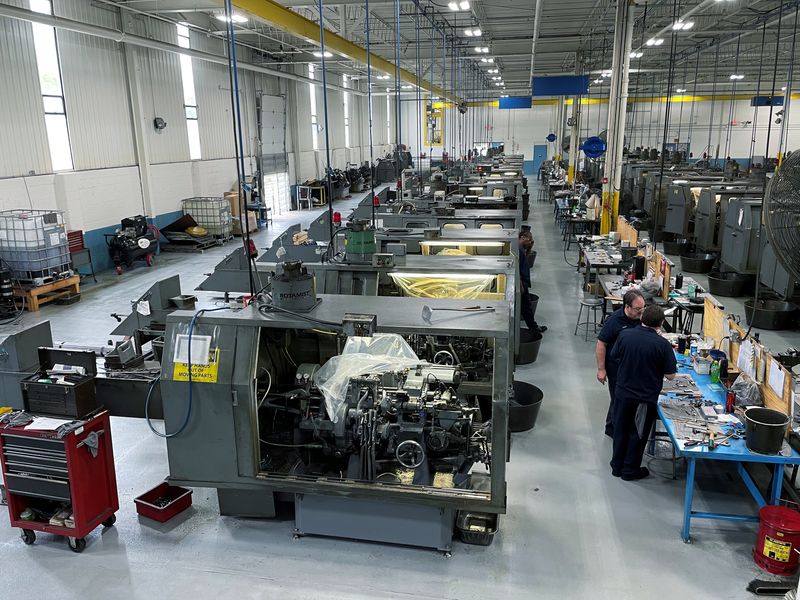U.S. business spending on equipment shows signs of slowing in April

WASHINGTON (Reuters) – New orders for U.S.-made capital goods rose less than expected in April, pointing to some moderation in business spending on equipment early in the second quarter, and headwinds are growing from rising interest rates and tightening financial conditions.
Orders for non-defense capital goods excluding aircraft, a closely watched proxy for business spending plans, increased 0.3% last month, the Commerce Department said on Wednesday.
These so-called core capital goods orders advanced 1.1% in March. They were up 18.0% on an year-on-year basis.
“Rate-sensitive business equipment investment growth is beginning to slow,” said Michael Pearce, a senior U.S. economist at Capital Economics in New York. “That is consistent with our view that economic activity is bending rather than breaking under the impact of higher rates.”
Economists polled by Reuters had forecast core capital goods orders gaining 0.5%. The data are not adjusted for inflation, which also contributed to the gains in orders last month.
Robust business investment in equipment helped to keep domestic demand strong in the first quarter even as the economy contracted, burdened by a record trade deficit.
But the Federal Reserve has adopted an aggressive monetary policy stance to cool demand and tame inflation, sparking a stock market sell-off and boosting U.S. Treasury yields and the dollar, which could slow capital expenditure growth.
The Fed has raised its policy interest rate by 75 basis points since March. The U.S. central bank is expected to hike the overnight rate by half a percentage point at each of its next meetings in June and July.
China’s zero COVID-19 policy, which led to the shutdown of the commercial hub of Shanghai, is likely to further entangle supply chains, hampering capital spending.
But the slowdown could be limited by companies seeking labor-saving technologies amid a severe shortage of workers. That would help to underpin manufacturing, which accounts for 12% of the U.S. economy.
Core capital goods orders were last month held back by decreases in bookings for fabricated metal products as well as electrical equipment, appliances and components. There were solid increases in orders for machinery and primary metals. But orders for computers and electronic products barely rose.
Shipments of core capital goods increased 0.8% last month after climbing 0.2% in March. Core capital goods shipments are used to calculate equipment spending in the GDP measurement.
Last month’s increase in core capital goods shipments suggested business spending would keep growing, though probably not at the 15.3% annualized pace logged in the first quarter. Gross domestic product declined at a 1.4% pace last quarter
Orders for durable goods, items ranging from toasters to aircraft that are meant to last three years or more, rose 0.4% after increasing 0.6% in March. They were supported by a 0.6% rebound in orders for transportation equipment, which followed a 0.3% decline in March.
Motor vehicle orders slipped 0.2% after surging 4.8% in March. Orders for the volatile civilian aircraft category rose 1.0% after tumbling 14.7% in the prior month. Boeing reported on its website that it had received 46 aircraft orders last month compared to 53 in March.
(Reporting by Lucia Mutikani; Editing by Nick Zieminski)


























comments